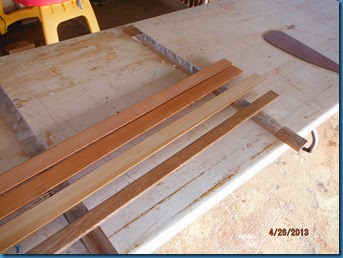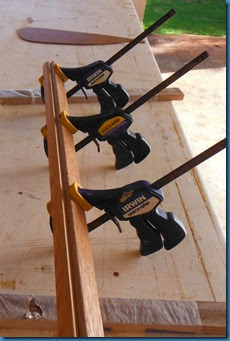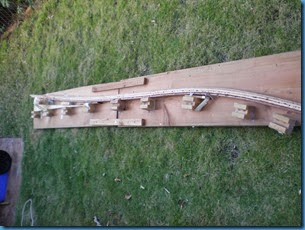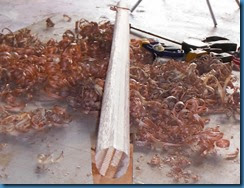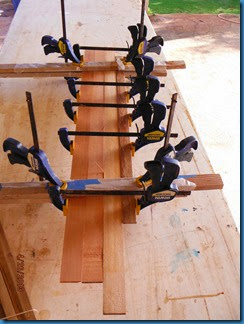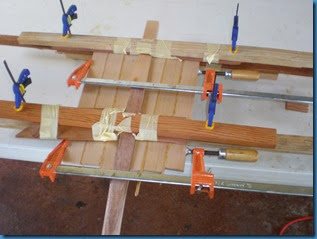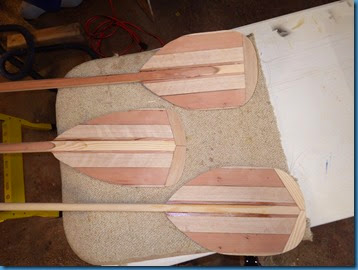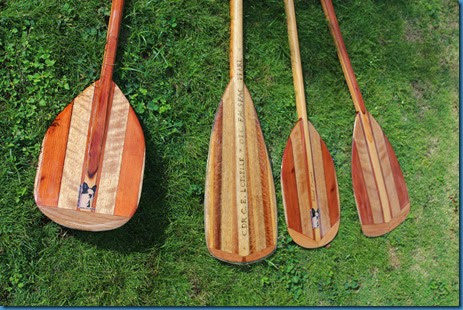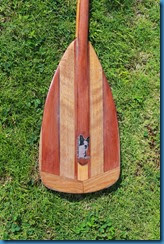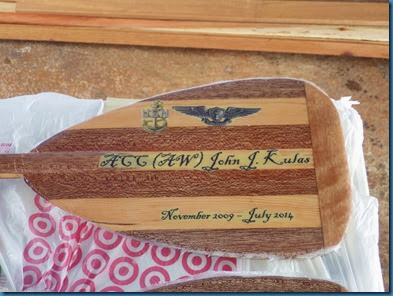All of my paddles, whether functional or decorative, are made the same way.
I mill my stock from a variety of woods, typically mahogany, fir, redwood and cedar:
Those are glued and clamped to create the blank for the paddle shaft. In the case of single or double bend shafts, I have jigs that I clamp them to achieve the bend.
Here is a double-bend SUP paddle coming out of the jig:
From there, I square out the blank with a planer, and then develop the oval shape of it using hand planes:
The blade is made of similar tight-grained, book-matched wood, edge-glued and clamped, with a temporary jig to keep things aligned. Here instead of book-matching I made one long blade that will get halved for gluing on to the shaft:
Another temporary jig to attach the blade halves to the shaft. I’ll use 4 or more big clamps normally; this shows the first two:
From there I use one of my paddle templates to draw the blade shape, and cut it with a jigsaw. From there it’s down to final shaping and sanding. I usually add a piece of hardwood at the bottom of the blade running perpendicular (or at an acute angle) to the rest of the grain – this not only looks good but makes the blade structurally stronger:
From there, the blades get a layer of fiberglass set in epoxy. The whole paddle is coated in epoxy, sanded and recoated until glassy smooth. I wood-burn the serial number and my signature, set any graphics under the glass, and voila! Beautiful and functional.

